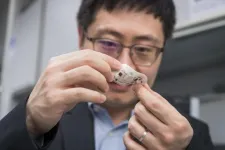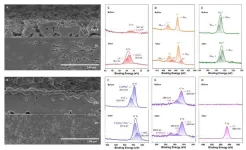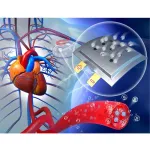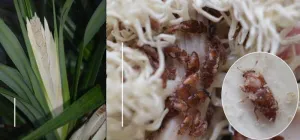(Press-News.org) The first comprehensive reference genome for ‘R570’, a widely cultivated modern sugarcane hybrid, has been completed in a landmark advancement for agricultural biotechnology.
Sugarcane contributes $2.2 billion to the Australian economy and accounts for 80 per cent of global sugar supply. The mapping of its genetic blueprint opens opportunities for new tools to enhance breeding programs around the world for this valuable bioenergy and food crop.
It is one of the last major crops to be fully sequenced, due to the fact its genome is almost three times the size of humans’ and far more complex, with more than 100 chromosomes.
The milestone marks a new era in breeding for the crop and was driven by an international research consortium, which included Australia’s national science agency CSIRO, The University of Queensland (UQ), and the Sugar Research Australia.
Principal Investigator and CSIRO Research Scientist Dr Karen Aitken said the breakthrough addresses the critical challenge of stagnating sugar yields by tapping into the previously inaccessible genetic information in the sugarcane genome.
“This is a major step forward for sugarcane research and will improve our understanding of complex traits like yield and adaption to diverse environmental conditions as well as disease resistance,” Dr Aitken said.
“This is the first high quality sugarcane variety genome to be completed. It represents a significant scientific achievement from 10 years of collaborative effort from scientists across the world.”
Co-author and UQ Professor of Innovation in Agriculture Robert Henry from the ARC Research Hub for Engineering Plants to Replace Fossil Carbon aims to develop renewable carbon products from plant biomass for use as cost-effective and sustainable aviation fuel.
“I’m certainly hoping to make great use of this genome to produce sugarcane that’s a better raw material to replace fossil carbon,” Professor Henry said.
“We need to do some major improvement in sugarcane for that use, because traditionally sugarcane has been bred just for sugar and now with the move to net zero, there is great interest in sugarcane as one of the most productive crops in the world to be that source of renewable carbon.“
Sugar Research Australia cytogeneticist Dr Nathalie Piperidis, also involved in the research effort, said the completion and release of the sequence is a major achievement which would provide a significant boost to the global sugarcane community, particularly for those scientists engaged in molecular breeding.
“Sugar Research Australia takes an immense pride in its involvement in this remarkable accomplishment. I am personally honoured that cytogenetics research played such an important role in unravelling the sequence,” Dr Piperidis said.
“Not only does it hold the promise of enhancing our understanding of this amazing and beloved crop but it will also offer unprecedented ways to advance breeding techniques within the Australian sugarcane industry to produce a range of renewable and commercially viable products that include but go way beyond sugar.”
This research was funded by the Joint Genome Institute (USA) through the US Department of Energy community sequencing program.
Open access to the sequence is facilitated via the Plant Comparative Genomics portal of the Department of Energy’s Joint Genome Institute, providing the broader plant science community a hub for accessing, visualising and analysing the sugarcane genome sequence.
The research paper ‘The complex polyploid genome architecture of sugarcane’ was published in Nature.
END
Complete sugarcane genome sequence opens up new era in breeding
2024-03-27
ELSE PRESS RELEASES FROM THIS DATE:
Super permeable wearable electronics developed for stable, long-term biosignal monitoring by scientists at City University of Hong Kong
2024-03-27
Super wearable electronics that are lightweight, stretchable and increase sweat permeability by 400-fold have been developed by scientists at City University of Hong Kong (CityUHK), enabling reliable long-term monitoring of biosignals for biomedical devices.
Led by Professor Yu Xinge in CityUHK’s Department of Biomedical Engineering (BME), the research team has recently developed a universal method to creating these super wearable electronics that allow gas and sweat permeability, solving the most critical issue facing wearable biomedical devices.
Wearable ...
Improving the safety of HED LIBs by co-coating separators with ceramics and solid-state electrolytes
2024-03-27
They published their work on Mar. 20, 2024, in Energy Material Advances.
"TR poses a critical safety concern for HED LIBs," said paper author Jiantao Wang, the general manager of National Power Battery Innovation Center, the general manager of China Automotive Battery Research Institute Co., Ltd, professor in General Research Institute for Nonferrous Metals. "It hinders HED LIBs wide application in electric vehicles."
Wang explained that TR can occur during various ...
A decade of aphantasia research: what we’ve learned about people who can’t visualize
2024-03-27
People who can’t visualise an image in their mind’s eye are less likely to remember the details of important past personal events or to recognise faces, according to a review of nearly ten years of research.
People who cannot bring to mind visual imagery are also less likely to experience imagery of other kinds, like imagining music, according to new research by the academic who first discovered the phenomenon.
Professor Adam Zeman, of the University of Exeter, first coined the term aphantasia in 2015, to describe those who can’t visualise. ...
Implantable batteries can run on the body’s own oxygen
2024-03-27
From pacemakers to neurostimulators, implantable medical devices rely on batteries to keep the heart on beat and dampen pain. But batteries eventually run low and require invasive surgeries to replace. To address these challenges, researchers in China devised an implantable battery that runs on oxygen in the body. The study, published March 27 in the journal Chem, shows in rats that the proof-of-concept design can deliver stable power and is compatible with the biological system.
“When you think about it, oxygen is the source of our life,” says corresponding author Xizheng Liu, who specializes in energy materials and devices at Tianjin University of Technology. “If ...
Sap beetles vs wind: what pollinates screw pines?
2024-03-27
Researchers Toru Miyamoto, Ko Mochizuki, and Atsushi Kawakita of the University of Tokyo have discovered the first species pollinated by sap beetles in the genus Pandanus, a group of palm-like plants native to the tropics and subtropics of Africa and Eurasia. The discovery overturned the long-held belief that these plants were pollinated by wind. The researchers also found that fragrant screw pines’ male and female flowers produced heat at night stably, making them the first such species in the family Pandanaceae. The findings were published in ...
New trial highlights promising intervention to reduce sitting and improve blood pressure in older adults
2024-03-27
A new Kaiser Permanente study found that a health coaching intervention successfully reduced sitting time for a group of older adults by just over 30 minutes a day. Study participants also showed meaningful improvements in blood pressure, comparable to the effect of other interventions focused on physical activity.
The study was published March 27 in JAMA Network Open and included 283 Kaiser Permanente Washington members aged 60-89.
Older adults typically sit for between 65 and 80 percent of the hours that they are awake, and strong evidence shows that ...
Physical activity and incident obesity across the spectrum of genetic risk for obesity
2024-03-27
About The Study: Individuals at high genetic risk of obesity needed higher daily step counts to reduce the risk of obesity than those at moderate or low genetic risk in this study of 3,124 adults. Population-based recommendations may underestimate physical activity needed to prevent obesity among those at high genetic risk.
Authors: Evan L. Brittain, M.D., M.Sc., and Douglas M. Ruderfer, Ph.D., of the Vanderbilt University Medical Center in Nashville, are the corresponding authors.
To access the embargoed study: Visit our For The Media website at this link https://media.jamanetwork.com/
(doi:10.1001/jamanetworkopen.2024.3821)
Editor’s Note: Please ...
Researchers create new tool for assessing risk of kidney injury after chemotherapy
2024-03-27
Using patient data from six major U.S. cancer centers, Brigham researchers and collaborators developed a risk prediction model for moderate-to-severe kidney injury after receiving the chemotherapy drug cisplatin in the largest, first generalizable study of its kind
Cisplatin is a highly effective chemotherapy that has been used to treat cancer for decades, but it can cause kidney injury that can potentially lead to the discontinuation of life-saving cancer treatments. Investigators from Brigham and Women’s Hospital (BWH), a founding member of the Mass General Brigham healthcare system, with researchers from the Dana-Farber Cancer Institute and other institutions, ...
Estimated sustainable cost-based prices for diabetes medicines
2024-03-27
About The Study: High prices limit access to newer diabetes medicines in many countries. The findings of this study suggest that robust generic and biosimilar competition could reduce prices to more affordable levels and enable expansion of diabetes treatment globally.
Authors: Melissa J. Barber, Ph.D., of the Yale Collaboration for Regulatory Rigor, Integrity, and Transparency in New Haven, Connecticut, is the corresponding author.
To access the embargoed study: Visit our For The Media website at this link https://media.jamanetwork.com/
(doi:10.1001/jamanetworkopen.2024.3474)
Editor’s ...
Higher genetic risk of obesity means working out harder for same results
2024-03-27
Persons with a higher genetic risk of obesity need to work out harder than those of moderate or low genetic risk to avoid becoming obese, according to a Vanderbilt University Medical Center (VUMC) paper published in JAMA Network Open.
Study authors used activity, clinical and genetic data from the National Institutes of Health’s All of Us Research Program to explore the association of genetic risk of higher body mass index and the level of physical activity needed to reduce incident obesity.
“Physical activity guidelines do not ...








